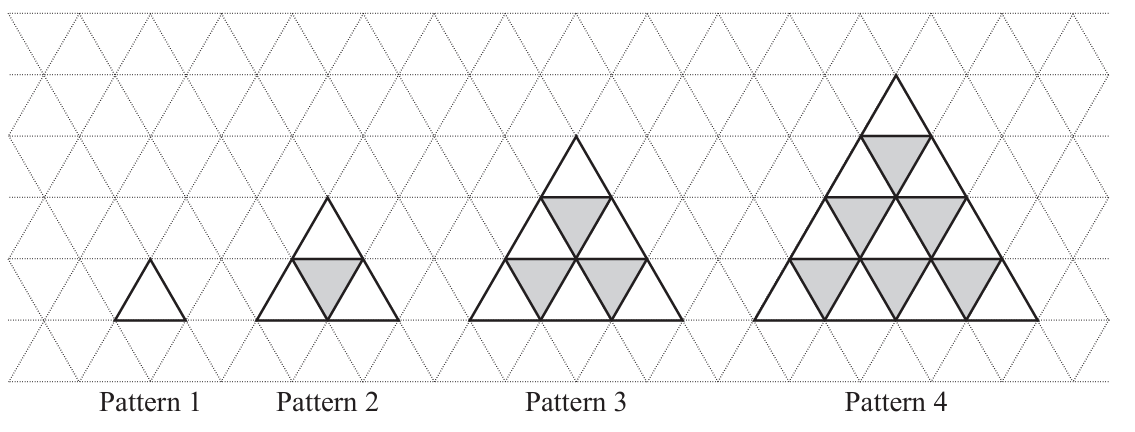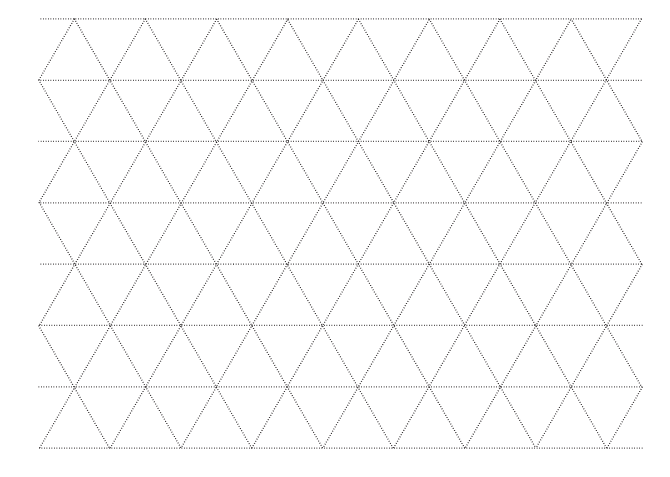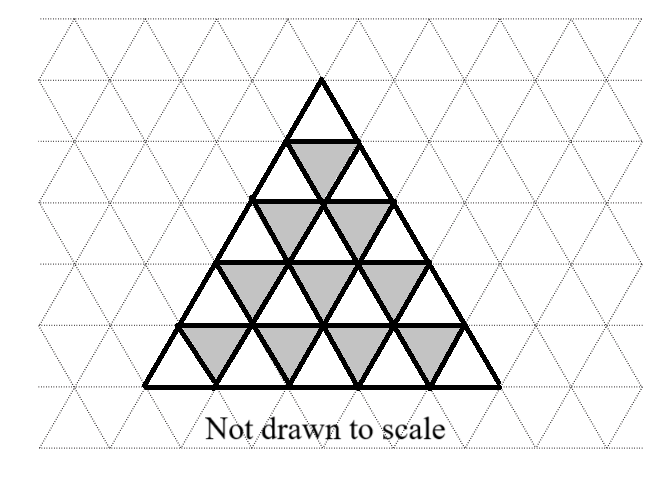Sequences
Welcome to Our Site
I greet you this day,
These are the solutions to Cambridge Ordinary Level (O-Level) past questions on Sequences.
The link to the video solutions will be provided for you. Please subscribe to the YouTube channel to be notified
of upcoming livestreams.
You are welcome to ask questions during the video livestreams.
If you find these resources valuable and if any of these resources were helpful in your passing the
any of the Cambridge Assessments on Mathematics, please consider making a donation:
Cash App: $ExamsSuccess or
cash.app/ExamsSuccess
PayPal: @ExamsSuccess or
PayPal.me/ExamsSuccess
Google charges me for the hosting of this website and my other
educational websites. It does not host any of the websites for free.
Besides, I spend a lot of time to type the questions and the solutions well.
As you probably know, I provide clear explanations on the solutions.
Your donation is appreciated.
Comments, ideas, areas of improvement, questions, and constructive criticisms are welcome.
Feel free to contact me. Please be positive in your message.
I wish you the best.
Thank you.
-
Symbols and Formulas: Arithmetic Sequence
- $AS_n$ = $nth$ term of an Arithmetic Sequence
- $a$ = first term
- $p$ = last term
- $d$ = common difference
- $n$ = number of terms
- $SAS_n$ = sum of the first $n$ terms of an Arithmetic Sequence
$ (1.)\:\: AS_n = a + d(n - 1) \\[5ex] (2.)\:\: AS_n = vn + w \:\:where\:\: v = d \:\:and\:\: w = a - d \\[5ex] (3.)\:\: p = a + d(n - 1) \\[5ex] (4.)\:\: SAS_n = \dfrac{n}{2}(a + AS_n) \\[7ex] (5.)\:\: SAS_n = \dfrac{n}{2}(a + p) \\[7ex] (6.)\:\: SAS_n = \dfrac{n}{2}[2a + d(n - 1)] \\[7ex] (7.)\:\: n = \dfrac{2 * SAS_n}{a + p} \\[7ex] (8.)\:\: n = \dfrac{p - a + d}{d} \\[7ex] (9.)\:\: n = \dfrac{-(2a - d) \pm \sqrt{(2a - d)^2 + 8d*SAS_n}}{2d} \\[7ex] (10.)\;\; d = \dfrac{(p - a)(p + a)}{2 * SAS_n - p - a} $
-
Symbols and Formulas: Geometric Sequence
- $GS_n$ = $nth$ term of a Geometric Sequence
- $a$ = first term
- $p$ = last term
- $r$ = common ratio
- $n$ = number of terms
- $SGS_n$ = sum of the first $n$ terms of a Geometric Sequence
- $S_{\infty}$ = sum to infinity of a Geometric Sequence
$ (1.)\:\: GS_n = ar^{n - 1} \\[5ex] (2.)\:\: SGS_n = \dfrac{a(r^{n} - 1)}{r - 1} \:\:for\:\: r \gt 1 \\[7ex] (3.)\:\: SGS_n = \dfrac{a(1 - r^{n})}{1 - r} \:\:for\:\: r \lt 1 \\[7ex] (4.)\:\: n = \dfrac{\log{\left[\dfrac{SGS_n(r - 1)}{a} + 1\right]}}{\log r} \\[7ex] (5.)\:\: If\:\:r \lt 1,\:\:the\:\:series\:\:converges\:\:and\:\: S_{\infty} = \dfrac{a}{1 - r} \\[7ex] (6.)\:\: If\:\:r \gt 1,\:\:the\:\:series\:\:diverges \\[5ex] (7.)\:\: If\:\:r = 1,\:\:S_{\infty}\:\:DNE \\[5ex] (8.)\:\: r = \dfrac{S_{\infty} - a}{S_{\infty}} \\[7ex] (9.)\:\: a = S_{\infty}(1 - r) $
-
Symbols and Formulas: Quadratic Sequence
- $QS_n$ = $n$th term of a Quadratic Sequence = $an^2 + bn + c$
- $1st$ = first term
- $2nd$ = second term
- $3rd$ = third term
- $4th$ = fourth term
- $n$ = number of terms
- $a$ = coefficient of $n^2$
- $b$ = coefficient of $n$
$ QS = 1st,\:\:\:\:2nd,\:\:\:3rd,\:\:\:4th,... \\[5ex] QS_n = an^2 + bn + c \\[5ex] (1.)\:\: a = \dfrac{1st + 3rd - 2(2nd)}{2} \\[7ex] (2.)\:\: b = \dfrac{8(2nd) - 5(1st) - 3(3rd)}{2} \\[7ex] (3.)\:\: c = 3(1st) - 3(2nd) + 3rd \\[5ex] (4.)\:\: \therefore QS_n = \dfrac{1st + 3rd - 2(2nd)}{2} * n^2 + \dfrac{8(2nd) - 5(1st) - 3(3rd)}{2} * n + 3(1st) - 3(2nd) + 3rd \\[7ex] The\:\:Left\:\:Hand\:\:Side\:\:must\;\;be\:\:equal\:\:to\;\;the\:\:Right\:\:Hand\:\:Side \\[5ex] (5.)\:\: a + b + c = 1st \\[5ex] (6.)\:\: 4a + 2b + c = 2nd \\[5ex] (7.)\:\: 9a + 3b + c = 3rd \\[5ex] (8.)\:\: 3a + b = 2nd - 1st \\[5ex] (9.)\:\: 8a + 2b = 3rd - 1st $
-
Symbols and Formulas: Other Sequences
- $TS_n$ = $nth$ term of a Triangular Number Sequence
- $SS_{n}$ = $nth$ term of a Square Number Sequence
- $CS_{n}$ = $nth$ term of a Cube Number Sequence
- $n$ = number of terms
- $STS_n$ = sum of the first $n$ terms of a Triangular Number Sequence
- $SSS_n$ = sum of the first $n$ terms of a Square Number Sequence
- $SCS_n$ = sum of the first $n$ terms of a Cube Number Sequence
$ \underline{Triangular\;\;Number\;\;Sequence} \\[3ex] (1.)\:\: TS_n = \dfrac{n(n + 1)}{2} \\[7ex] (2.)\;\; n = \dfrac{\sqrt{8 * TS_n + 1} - 1}{2} \\[7ex] (3.)\:\: TS_n = C(n + 1, 2)...Combinatorics\;\;symbol\;\;for\;\;Combinations \\[5ex] (4.)\;\; STS_n = \dfrac{n(n + 1)(n + 2)}{6} \\[7ex] (5.)\:\: STS_n = C(n + 2, 3)...Combinatorics\;\;symbol\;\;for\;\;Combinations \\[7ex] \underline{Square\;\;Number\;\;Sequence} \\[3ex] (1.)\:\: SS_n = n^2 \\[5ex] (2.)\;\; n = \sqrt{SS_n} \\[5ex] (3.)\;\; SSS_n = \dfrac{n(n + 1)(2n + 1)}{6} \\[7ex] \underline{Cube\;\;Number\;\;Sequence} \\[3ex] (1.)\:\: CS_n = n^3 \\[5ex] (2.)\;\; n = \sqrt[3]{CS_n} \\[5ex] (3.)\;\; SCS_n = \left[\dfrac{n(n + 1)}{2}\right]^2 \\[7ex] (4.)\;\; n = \dfrac{\sqrt{8\sqrt{SCS_n} + 1} - 1}{2} \\[7ex] $
-
Symbols and Formulas: Recursive Sequence
- $RS_n$ = $nth$ term of a Recursive Sequence
- $RS_{n + 1}$ = next term of a Recursive Sequence
- $a$ = first term (constant)
- $r$ = common ratio (coefficient of the $nth$ term)
- $RS_1$ = initial term
- $n$ = number of terms
- $SRS_n$ = sum of the first $n$ terms of a Recursive Sequence
- $\phi$ = Golden Ratio
- $FS_n$ = $nth$ term of a Fibonacci Sequence
- $SFS_n$ = sum of the first $n$ terms of a Fibonacci Sequence
$ \underline{First-Order\;\;Linear\;\;Recurrence\;\;Relation} \\[3ex] (1.)\:\: RS_{n + 1} = r * RS_{n} + a \\[5ex] (2.)\:\: RS_{n + 1} = \dfrac{RS_1 * r^n(r - 1) + a(r^n - 1)}{r - 1} \;\;\;for\;\;r \gt 1 \\[7ex] (3.)\;\; RS_{n + 1} = \dfrac{RS_1 * r^n(1 - r) + a(1 - r^n)}{1 - r} \;\;\;for\;\;r \lt 1 \\[7ex] \underline{Fibonacci\;\;Sequence} \\[3ex] (1.)\;\; \phi = \dfrac{1 + \sqrt{5}}{2} \\[7ex] (2.)\;\; FS_n = \dfrac{\sqrt{5}}{5}\left[\left(\dfrac{1 + \sqrt{5}}{2}\right)^n - \left(\dfrac{1 - \sqrt{5}}{2}\right)^n\right] \\[7ex] (3.)\;\; FS_n = \dfrac{\sqrt{5}}{5}\left[\phi^n - \left(\dfrac{1 - \sqrt{5}}{2}\right)^n\right] \\[7ex] (4.)\;\; SFS_n = \dfrac{\sqrt{5}}{5}\left[\dfrac{\phi^3(\phi^{n - 1} - 1) + [(\phi - 1)(1 - \phi^2)][(1 - \phi)^{n - 1} - 1]}{\phi(\phi - 1)}\right] + 1 $





